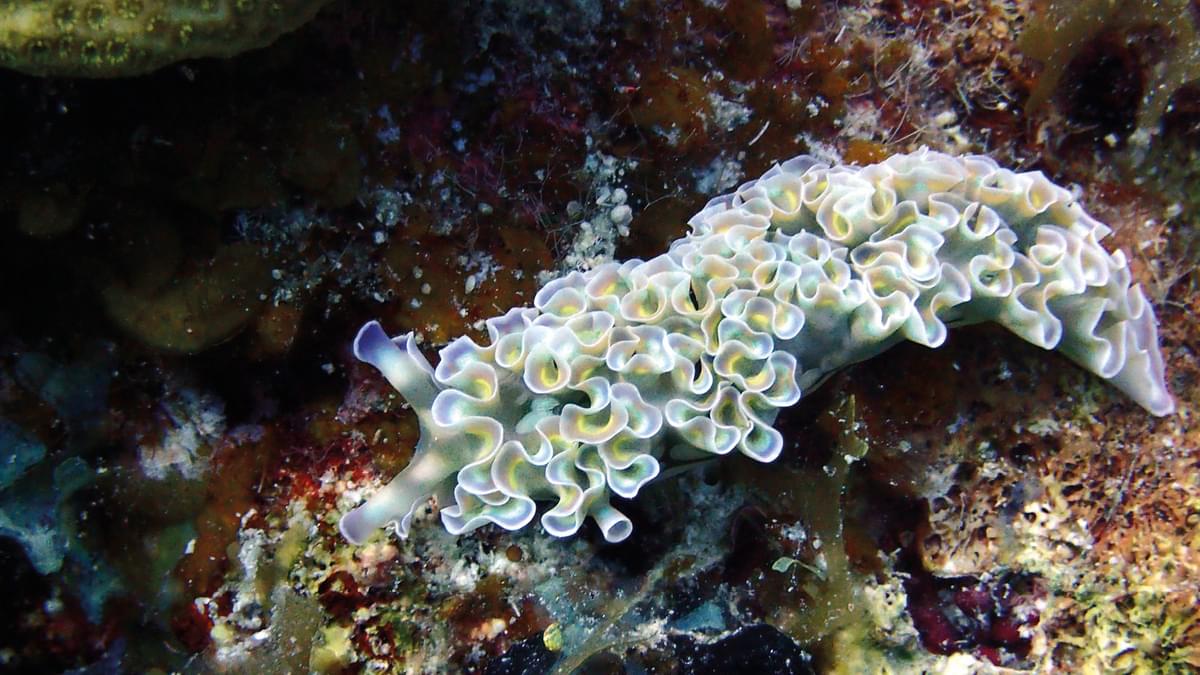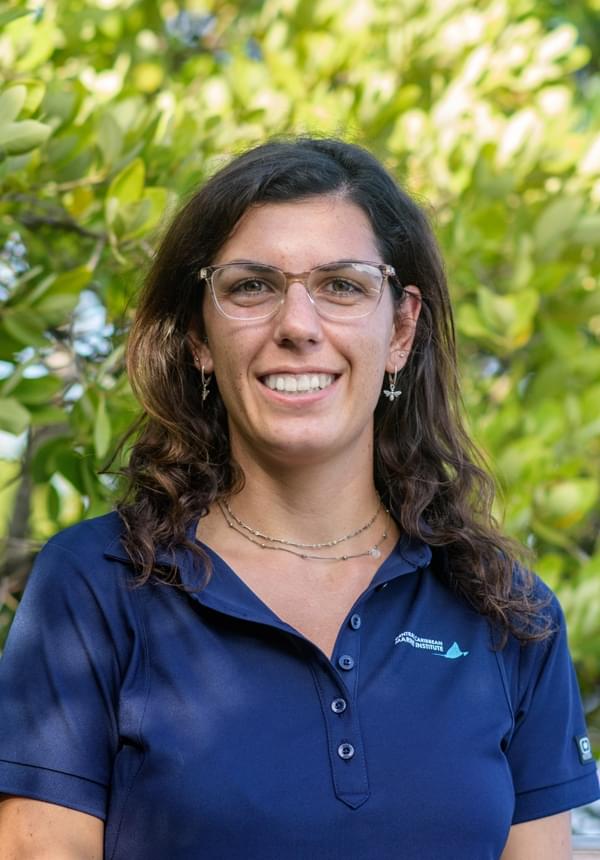
Incredible Invertebrates
This live lesson is an immersive dive on a pristine coral reef, where students will learn about numerous invertebrate species. The CCMI team will guide students through an interactive identification lesson by looking at how the external features of an invertebrate can help us classify them. CCMI's underwater educator will explain why invertebrates are essential or a healthy coral reef ecosystem and describe how local invertebrate populations can be managed and protected. Students will be able to participate in a live lesson by engaging with an underwater educator as they explore the reefs of Little Cayman in search of these fascinating creatures.
Preparation
Prepare for this live lesson by reviewing the attached learning resources. Don't forget to submit questions in advance via the Live Lesson tab in your user profile, once you have booked the lesson.
Learning Objectives
- Define ‘invertebrate’
- Describe how to identify common invertebrate species on the reef
- Discover the different habitats in which marine invertebrates live
- Explain why invertebrates are important for a healthy reef ecosystem
- Discuss how humans can manage and protect local invertebrate populations
Live lesson outline
1. Introduction (3 mins)
The CCMI host welcomes students and outlines the lesson.
2. Defining invertebrates (7 mins)
The CCMI educator defines ‘invertebrate’. An invertebrate is an animal the neither possesses nor develops a backbone. The backbone runs from the base of the skull to the pelvis. It supports the body and protects the thick bundle of nerves known as the spinal cord. This thick bundle of nerves that make up the spinal cord carry messages from the brain to the body allowing for communication between different parts of the body. Invertebrates lack the vertebral column consisting of the spinal cord and backbone.
3. Finding invertebrates on the reef (5 mins)
The CCMI underwater educator will move around the reef and identify invertebrate species in the surrounding area. Invertebrates can be found all over the reef. Some are sessile and make their home sitting stationary on the reef. Examples include corals, sponges, anemones, zoanthids and boring worms. Other invertebrates are able to move around the reef. Examples include snails, octopus, sea stars, crabs, and shrimp. Marine invertebrates can be found in almost all marine habitats- on the sand, hiding in the reef and floating in the open water.
4. Questions (5 mins)
The CCMI host and underwater educator will field pre-submitted questions and any from the live chat.
5. Importance of invertebrates to a healthy reef (5 mins)
All creatures are important for a healthy reef ecosystem because they form part of the food chain. Every organism plays a crucial role within the natural system that allows the entire ecosystem to stay in balance. There are certain species of marine invertebrates that have a larger impact on the ecosystem than others. These are known as keystone species. These keystone species dramatically affect the ecosystem and without them the ecosystem could be drastically different or cease to exist all together.
6. Questions (5 mins)
The CCMI host and underwater educator will field pre-submitted questions and any from the live chat.
7. Managing and protecting invertebrates on the reef (5 mins)
CCMI educator describes how local invertebrate populations can be managed and protected. Invertebrates currently face threats including overfishing, pollution and climate change. Humans can manage and protect local invertebrate populations by implementing and following sustainable fishing laws, reducing pollution and reducing use of products that could lead to further pollution, and reducing our carbon footprint.
8. Final questions and recap (5 mins)
Questions and the CCMI host recaps the live dive learning objectives and concludes the lesson.
Vocabulary List
Invertebrate: any animal without a backbone
Vertebrate: any animal with a backbone
Ecosystem: naturally occurring system made up of organisms and their environment
Food Chain: simple representation to show how energy moves from producers to consumers in an ecosystem
Keystone Species: type of organism that plays a critical role within an ecosystem, often with a disproportionate effect on other organisms in that system
Pollution: introduction of contaminants into the environment which have negative effects
Climate Change: change in global weather patterns over time. Much can be attributed to the effects of increased carbon dioxide in the atmosphere from human activities
Carbon Footprint: the amount of greenhouse gases, especially carbon dioxide, produced by an individual, event, organization, or product, that results from the burning of fossil fuels
Speakers

Maisy Fuller
Senior Education Coordinator, CCMI

Miriam Pierotti
Assistant Education Coordinator, CCMI

Alyssa Weber
Education Intern, CCMI
Brought to you by


Incredible Invertebrates
This live lesson is an immersive dive on a pristine coral reef, where students will learn about numerous invertebrate species. The CCMI team will guide students through an interactive identification lesson by looking at how the external features of an invertebrate can help us classify them. CCMI's underwater educator will explain why invertebrates are essential or a healthy coral reef ecosystem and describe how local invertebrate populations can be managed and protected. Students will be able to participate in a live lesson by engaging with an underwater educator as they explore the reefs of Little Cayman in search of these fascinating creatures.
Preparation
Prepare for this live lesson by reviewing the attached learning resources. Don't forget to submit questions in advance via the Live Lesson tab in your user profile, once you have booked the lesson.
Learning Objectives
- Define ‘invertebrate’
- Describe how to identify common invertebrate species on the reef
- Discover the different habitats in which marine invertebrates live
- Explain why invertebrates are important for a healthy reef ecosystem
- Discuss how humans can manage and protect local invertebrate populations
Live lesson outline
1. Introduction (3 mins)
The CCMI host welcomes students and outlines the lesson.
2. Defining invertebrates (7 mins)
The CCMI educator defines ‘invertebrate’. An invertebrate is an animal the neither possesses nor develops a backbone. The backbone runs from the base of the skull to the pelvis. It supports the body and protects the thick bundle of nerves known as the spinal cord. This thick bundle of nerves that make up the spinal cord carry messages from the brain to the body allowing for communication between different parts of the body. Invertebrates lack the vertebral column consisting of the spinal cord and backbone.
3. Finding invertebrates on the reef (5 mins)
The CCMI underwater educator will move around the reef and identify invertebrate species in the surrounding area. Invertebrates can be found all over the reef. Some are sessile and make their home sitting stationary on the reef. Examples include corals, sponges, anemones, zoanthids and boring worms. Other invertebrates are able to move around the reef. Examples include snails, octopus, sea stars, crabs, and shrimp. Marine invertebrates can be found in almost all marine habitats- on the sand, hiding in the reef and floating in the open water.
4. Questions (5 mins)
The CCMI host and underwater educator will field pre-submitted questions and any from the live chat.
5. Importance of invertebrates to a healthy reef (5 mins)
All creatures are important for a healthy reef ecosystem because they form part of the food chain. Every organism plays a crucial role within the natural system that allows the entire ecosystem to stay in balance. There are certain species of marine invertebrates that have a larger impact on the ecosystem than others. These are known as keystone species. These keystone species dramatically affect the ecosystem and without them the ecosystem could be drastically different or cease to exist all together.
6. Questions (5 mins)
The CCMI host and underwater educator will field pre-submitted questions and any from the live chat.
7. Managing and protecting invertebrates on the reef (5 mins)
CCMI educator describes how local invertebrate populations can be managed and protected. Invertebrates currently face threats including overfishing, pollution and climate change. Humans can manage and protect local invertebrate populations by implementing and following sustainable fishing laws, reducing pollution and reducing use of products that could lead to further pollution, and reducing our carbon footprint.
8. Final questions and recap (5 mins)
Questions and the CCMI host recaps the live dive learning objectives and concludes the lesson.
Vocabulary List
Invertebrate: any animal without a backbone
Vertebrate: any animal with a backbone
Ecosystem: naturally occurring system made up of organisms and their environment
Food Chain: simple representation to show how energy moves from producers to consumers in an ecosystem
Keystone Species: type of organism that plays a critical role within an ecosystem, often with a disproportionate effect on other organisms in that system
Pollution: introduction of contaminants into the environment which have negative effects
Climate Change: change in global weather patterns over time. Much can be attributed to the effects of increased carbon dioxide in the atmosphere from human activities
Carbon Footprint: the amount of greenhouse gases, especially carbon dioxide, produced by an individual, event, organization, or product, that results from the burning of fossil fuels
Speakers

Maisy Fuller
Senior Education Coordinator, CCMI

Miriam Pierotti
Assistant Education Coordinator, CCMI

Alyssa Weber
Education Intern, CCMI
Brought to you by


